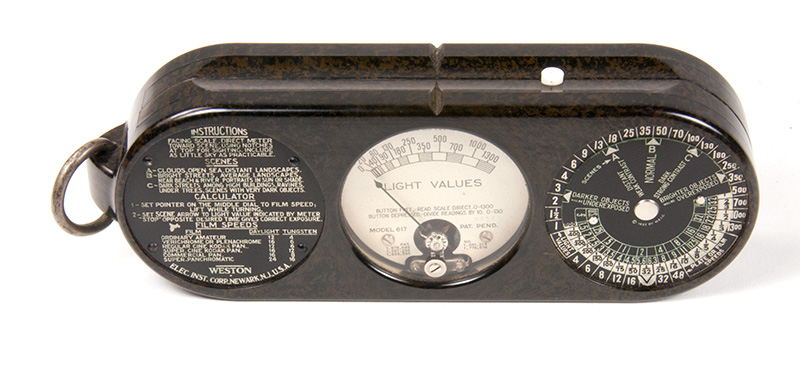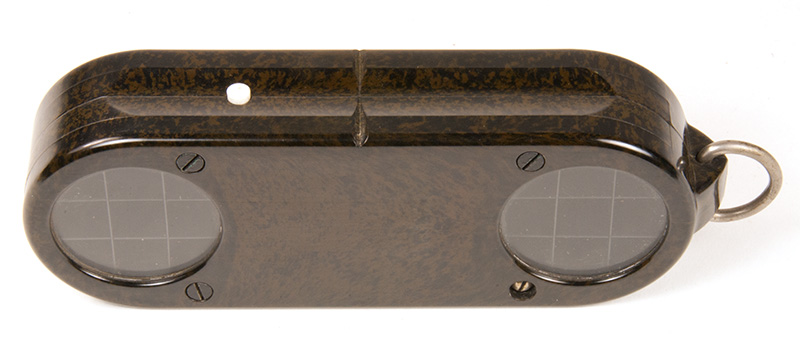
Weston Model 617 Exposure Meter

Weston Model 617 Exposure Meter
The Weston Photronic Exposure Meter model 617 was introduced ca 1932/33. Manufactured by Weston Electrical Instrument Corporation of Newark, New Jersey USA, this was Weston's first in a long line of photographic exposure meters.
According to the book Exposure Meter and Cameras with built-in Exposure meter by Miha Podlogar © BEBOP d.o.o. 1996, the Weston model 617 and the Photolux, made by the German company Gossen, were the first self-powered photographic electrical exposure meters to appear on the market. It is not clear which meter appeared first. Both meters were self-powered selenium cell devices.
The Rhamstine Electrophot exposure meter, made in Detroit, Michigan USA and introduced in 1932, used a battery-powered selenium cell as a light receptor. The book's author considers this to be the first practical photographic electrical exposure meter. Yet almost immediately the Electrophot design was superceded by the more powerful Gossen and Weston selenium cells that eliminated the need for battery power. (Thanks to collector Tom Meyer for confirming the country of origin of the Electrophot exposure meter.)
Whether the Weston 617 meter was the first, second or third modern exposure meter, suffice it to say that each of these early electrical meters were ground-breakers. The original model 617 Weston exposure meter, available for about one year, sold for $40.00, a significant amount of money during the Great Depression
Made of bakelite in a variety of colors, the model 617 is large, the width, height and depth in inches are 6 5/8 x 2 1/4 x 1 1/4. A groove for sighting the meter is cut into the top of the housing. To increase sensitivity in low-light levels, a top-mounted button can be pressed.

Weston Model 617 Exposure Meter
The original Weston exposure meter was powered by two selenium cells. Within a year, Weston launched a redesigned model, the 617-2, that required only one selenium cell. Two glass-covered round windows can be seen in the photograph above. The selenium cells are located behind the glass.
An unusual transparent Weston exposure meter can be seen by following this link.
Other early and unusual exposure measurement devices can be found in the Accessories section of this site.

|
Page created June 25, 2002;
updated December 20, 2020 |